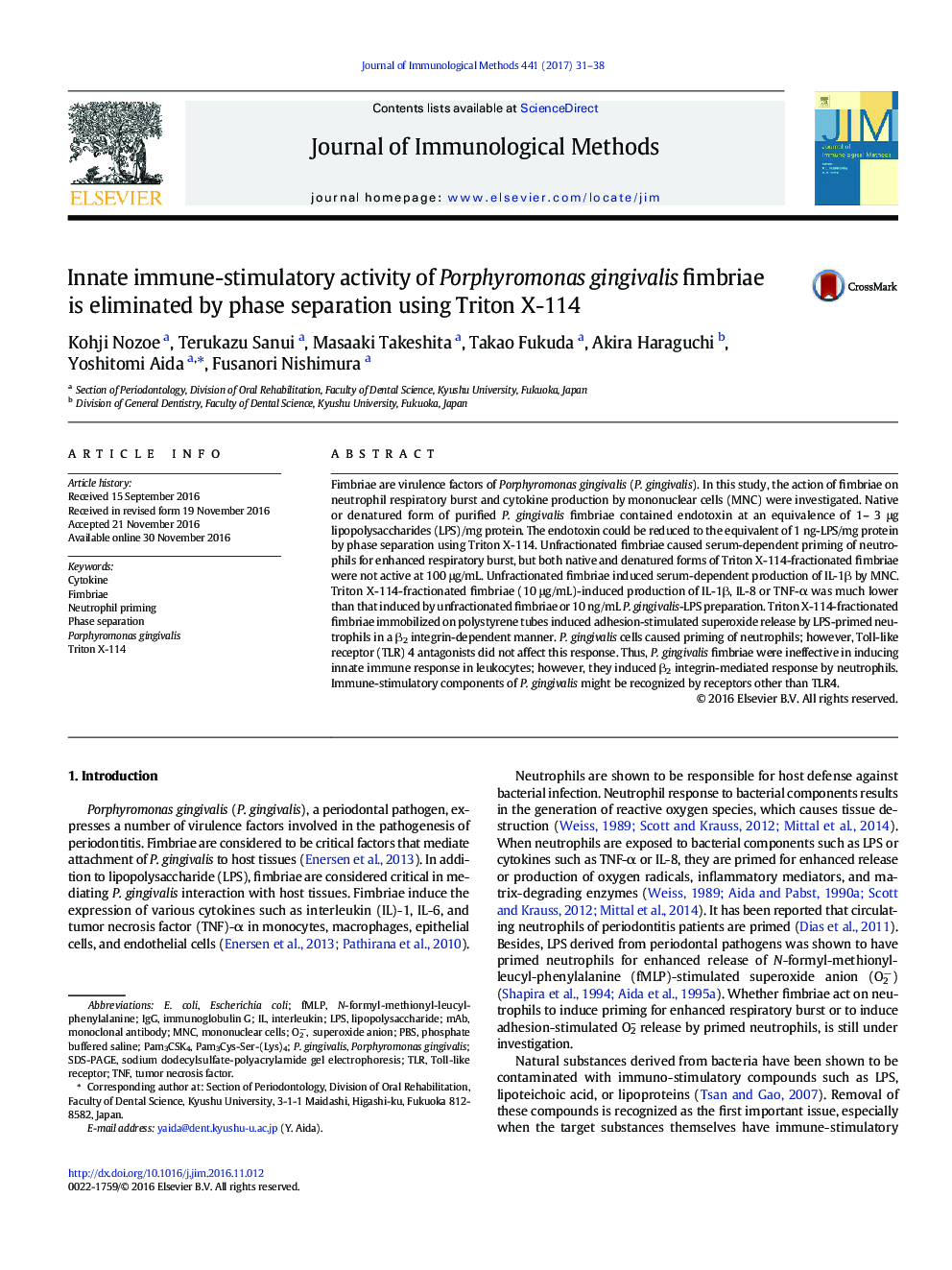| Article ID | Journal | Published Year | Pages | File Type |
|---|---|---|---|---|
| 5522088 | Journal of Immunological Methods | 2017 | 8 Pages |
Fimbriae are virulence factors of Porphyromonas gingivalis (P. gingivalis). In this study, the action of fimbriae on neutrophil respiratory burst and cytokine production by mononuclear cells (MNC) were investigated. Native or denatured form of purified P. gingivalis fimbriae contained endotoxin at an equivalence of 1- 3 μg lipopolysaccharides (LPS)/mg protein. The endotoxin could be reduced to the equivalent of 1 ng-LPS/mg protein by phase separation using Triton X-114. Unfractionated fimbriae caused serum-dependent priming of neutrophils for enhanced respiratory burst, but both native and denatured forms of Triton X-114-fractionated fimbriae were not active at 100 μg/mL. Unfractionated fimbriae induced serum-dependent production of IL-1β by MNC. Triton X-114-fractionated fimbriae (10 μg/mL)-induced production of IL-1β, IL-8 or TNF-α was much lower than that induced by unfractionated fimbriae or 10 ng/mL P. gingivalis-LPS preparation. Triton X-114-fractionated fimbriae immobilized on polystyrene tubes induced adhesion-stimulated superoxide release by LPS-primed neutrophils in a β2 integrin-dependent manner. P. gingivalis cells caused priming of neutrophils; however, Toll-like receptor (TLR) 4 antagonists did not affect this response. Thus, P. gingivalis fimbriae were ineffective in inducing innate immune response in leukocytes; however, they induced β2 integrin-mediated response by neutrophils. Immune-stimulatory components of P. gingivalis might be recognized by receptors other than TLR4.
